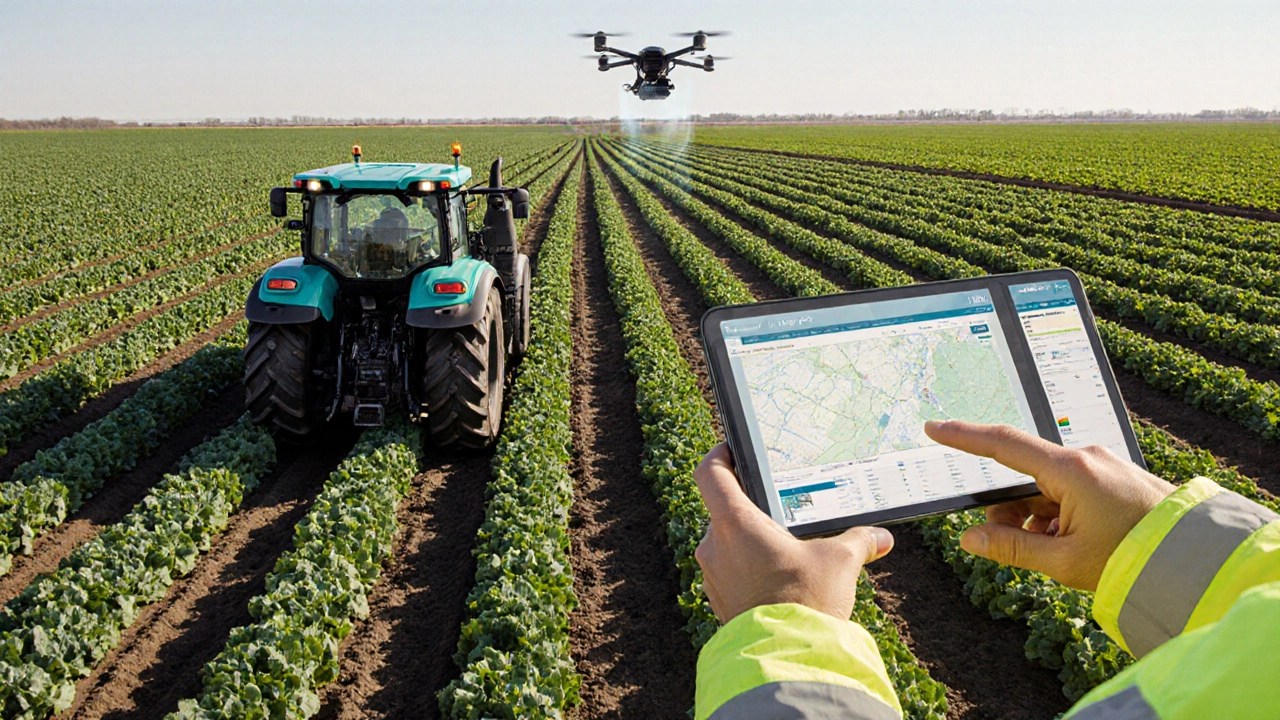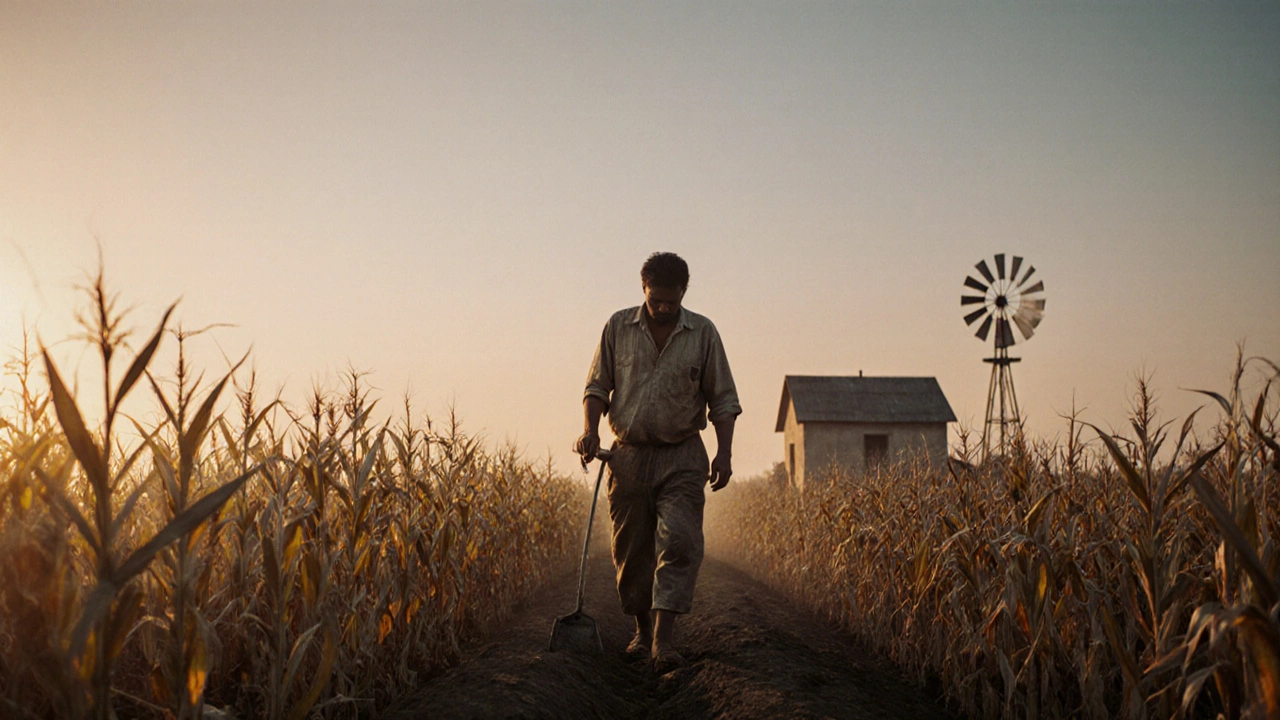Farming Hours Calculator
Estimate Your Farming Hours
Results
Farmers are the backbone of food production, but their daily routine is far from a 9‑to‑5 job. Understanding how many hours a day they actually work helps demystify rural life and informs policy, technology adoption, and career choices.
Key Takeaways
- On average, farmer work hours range from 10 to 14 hours per day during peak seasons and drop to 6‑8 hours in off‑season periods.
- Crop growers typically log more hours than livestock producers because planting and harvesting are time‑sensitive.
- Mechanization can cut daily hours by up to 30 %, but small‑holder farms still rely heavily on manual labor.
- Seasonality, farm size, and market demands are the three biggest drivers of workload.
- Modern agri‑technology, such as GPS‑guided tractors, is reshaping the workday for a new generation of farmers.
What a Typical Farming Day Looks Like
Even on a “quiet” day, a farmer’s schedule is a patchwork of routine checks, maintenance, and unexpected tasks. A common flow might be:
- Pre‑dawn inspection of livestock or field conditions.
- Equipment start‑up and safety checks (tractors, irrigation pumps, milking machines).
- Morning field work - planting, weeding, or feeding animals.
- Mid‑day break for meals and paperwork (record‑keeping, market orders).
- Afternoon tasks - pest scouting, fertilizer application, or herd health checks.
- Evening wrap‑up - equipment shutdown, data entry, and planning for the next day.
On a non‑peak day, this routine can be completed in 6‑8 hours. During planting or harvest windows, the same steps stretch into evenings and sometimes overnight, pushing the total to 12‑14 hours.
Seasonal Peaks and Lulls
Farm work is deeply tied to the calendar. Below is a snapshot of average daily hours by season for two common farm types:
| Farm Type | Winter | Spring | Summer | Fall |
|---|---|---|---|---|
| Crop Farming | 6‑8 | 12‑14 | 10‑12 | 12‑15 |
| Livestock Farming | 8‑10 | 9‑11 | 10‑12 | 9‑11 |
Spring and fall are the busiest for crops because planting and harvesting demand rapid, coordinated effort. Livestock farms maintain a steadier rhythm year‑round, but milking, breeding, and health checks still create peaks.

How Farm Size and Ownership Model Influence Hours
Small‑holder farms (under 50 acres) often see the highest daily hours per acre. Families juggle multiple roles-planting, marketing, and bookkeeping-without the budget for hired help. In contrast, large commercial operations employ specialized crews and rely on advanced machinery, reducing the owner’s personal time on the ground.
For example, a 20‑acre organic vegetable farm may see the owner working 12‑13 hours a day during harvest, while a 500‑acre corn operation uses autonomous tractors and reports owner workdays of 5‑6 hours, delegating field tasks to salaried workers.
Technology’s Role in Shaping the Workday
Mechanization was the first wave of time‑saving innovation. Modern agri‑technology adds a second wave: precision farming tools, drones, and farm management software. These tools can cut labor by up to 30 % on average, according to a 2024 USDA extension study.
Key tech that directly reduces daily hours:
- GPS‑Guided Tractors - automate row alignment, reduce field passes.
- Drones - scout pest outbreaks, saving hours of walking the rows.
- Farm Management Software - consolidates record‑keeping, budgeting, and weather alerts.
However, technology adoption is uneven. Small farms lack capital, and older farmers may be slower to adopt digital tools, meaning the traditional long workday persists for many.
Comparing Farming Hours to Other Professions
When you stack farmer work hours against typical urban jobs, the contrast is striking. Office workers in the U.S. average 8.5 hours per day, while healthcare workers clock around 9‑10 hours under shift schedules. Farmers, especially during peak seasons, routinely exceed 12 hours-a reality that influences family life, health, and community dynamics.
Long‑term health studies (e.g., the 2023 International Journal of Rural Health) link extended daily work (>10 hours) with higher rates of musculoskeletal issues and sleep disturbances, underscoring the need for ergonomic tools and seasonal rest periods.

Practical Tips for Aspiring Farmers
If you’re considering a farming career, here are three actionable steps to manage workload from day one:
- Start small and scale wisely. Begin with a manageable plot (5‑10 acres) to gauge realistic hours before expanding.
- Invest in at least one time‑saving technology-such as a multi‑function tractor attachment-early on. The ROI often shows up in reduced labor hours within the first season.
- Build a support network. Cooperative groups can share equipment and labor during peak periods, effectively spreading the workload.
Remember, the goal isn’t to work endless hours but to create a sustainable rhythm that balances production and personal well‑being.
Quick Checklist: Estimating Your Daily Hours
- Identify farm type (crop vs. livestock) and size.
- Map seasonal peaks for your region.
- List available equipment and technology.
- Calculate labor needs per task (planting, feeding, maintenance).
- Factor in personal vs. hired labor.
- Adjust for weather‑related emergencies (e.g., storms, frost).
Frequently Asked Questions
Do all farmers work the same number of hours?
No. Hours vary by farm type, size, season, and technology use. Small organic vegetable farms often exceed 12 hours during harvest, while large mechanized grain farms may see owners working less than 6 hours a day.
How does mechanization affect farmer work hours?
Mechanization can reduce daily labor by 20‑30 % on average. GPS‑guided tractors, automatic sprayers, and drones handle repetitive tasks, freeing farmers to focus on decision‑making and market activities.
Are there legal limits on farm work hours?
In most countries, family‑run farms are exempt from standard labor hour regulations. However, hired workers are protected under national labor laws that typically cap weekly hours at 40‑48, with overtime pay required beyond that.
What health risks are associated with long farming days?
Extended physical labor can lead to musculoskeletal disorders, chronic back pain, and increased fatigue. Studies also link long days with higher stress levels and poorer sleep quality, especially during peak seasons.
Can modern tech completely eliminate long workdays?
Technology can dramatically shorten many tasks, but weather, market timing, and animal care still demand human attention. The goal is to make those critical moments more manageable, not to eradicate work altogether.





